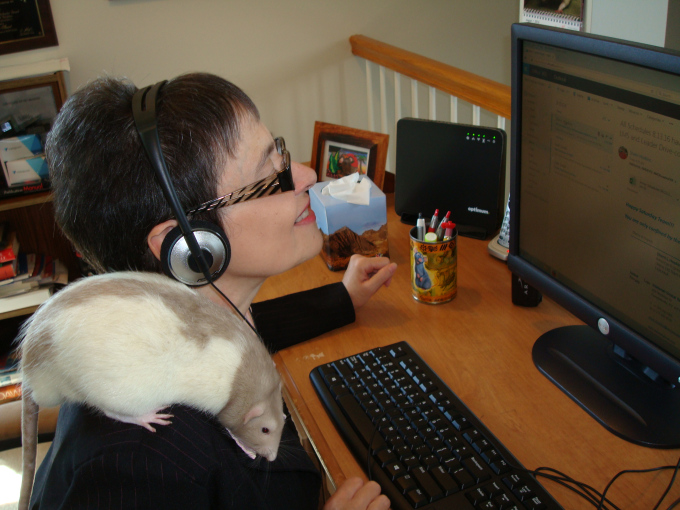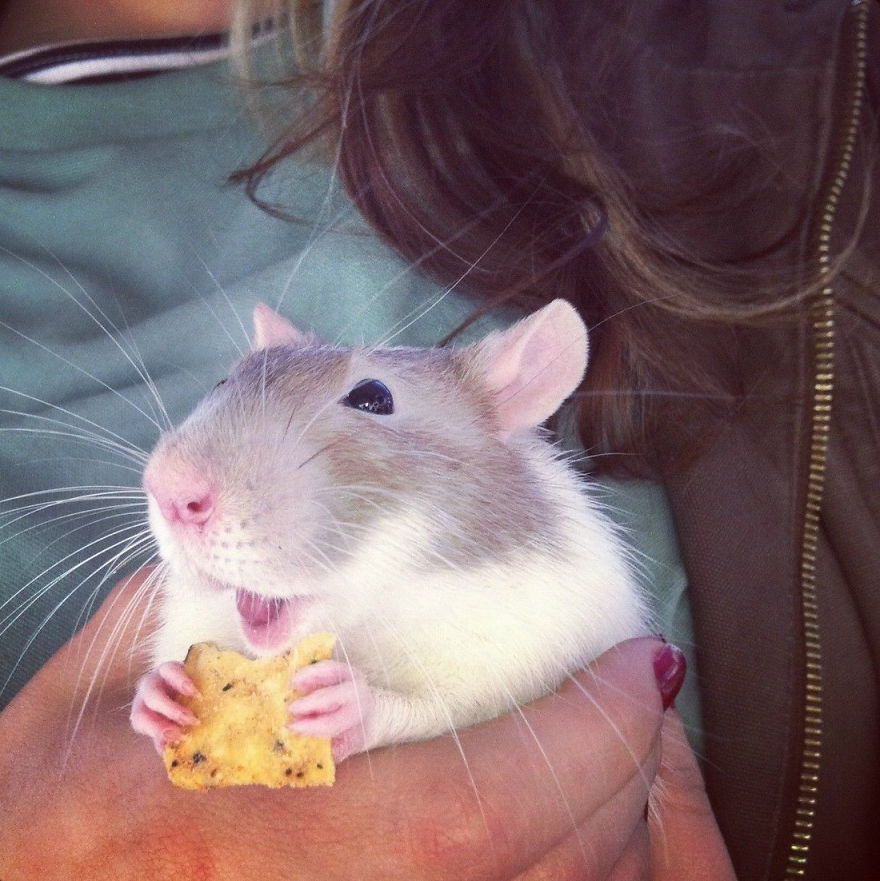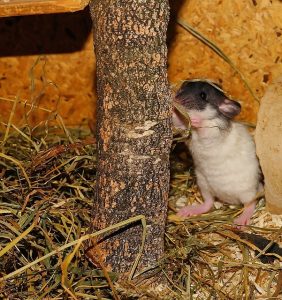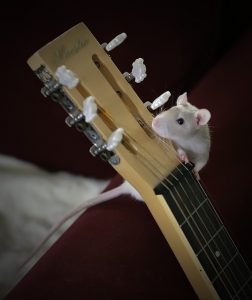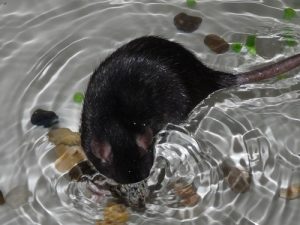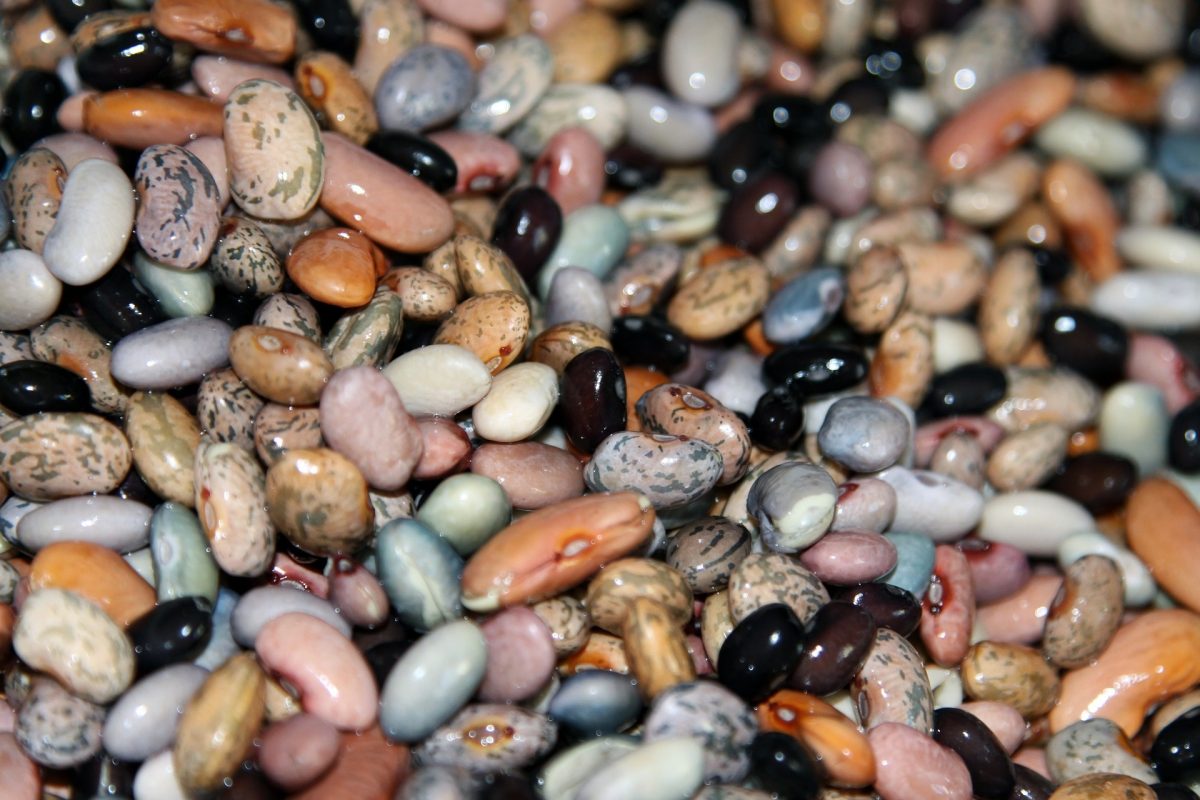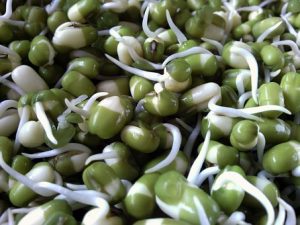Have you ever considered what a rat’s ancestral diet might have been? When writing The New Scuttling Gourmet, I researched this in detail. While some of my conclusions were educated guesses, one thing is certain – their ancestral diet was fresh, foraged food – mainly plants. Rats have eaten a fresh diet for most of their ancestral history before they became commensal and started to live off our stored food and waste. So why has the diet of the modern pet rat drifted so far from their natural foods?
 The history of feeding domesticated rats began in laboratories in the late 19th century. The Wistar Institute in Philadelphia was the first to standardise the laboratory rat (by inbreeding). They were also the first to create pelleted food for rats. This was essential in the research setting as a natural diet would create unwanted variables. It’s important to realise that this was not a diet produced for the benefit of the rats, few of whom would ever reach full maturity. It was a diet to support the experimental model.
The history of feeding domesticated rats began in laboratories in the late 19th century. The Wistar Institute in Philadelphia was the first to standardise the laboratory rat (by inbreeding). They were also the first to create pelleted food for rats. This was essential in the research setting as a natural diet would create unwanted variables. It’s important to realise that this was not a diet produced for the benefit of the rats, few of whom would ever reach full maturity. It was a diet to support the experimental model.
Early domesticated rat diet
When rats were first kept as pets in Europe in the 19th century, they were fed table scraps, and later rabbit food, dog biscuits and such were added to the diet. In the 1980s the gradual increase in the popularity of rats as companion animals led to the marketing of laboratory blocks to the pet market. Around the same time, pet food manufacturers like Burgess Pet Care began to market real food mixes for rats – often called rat muesli.
 Since then, the diet fed to pet rats has been evolving. Many rat guardians now make up their own mixes based on Shunamite Diet principles or other sources. In Europe at least, the whole focus of keeping rats has drifted towards a more natural approach. Large open cage layouts, deep cage litter, bioactive setups, scatter-feeding and increasing amounts of fresh food all support natural behaviours and well-being. This sets the stage for changes towards a more natural diet.
Since then, the diet fed to pet rats has been evolving. Many rat guardians now make up their own mixes based on Shunamite Diet principles or other sources. In Europe at least, the whole focus of keeping rats has drifted towards a more natural approach. Large open cage layouts, deep cage litter, bioactive setups, scatter-feeding and increasing amounts of fresh food all support natural behaviours and well-being. This sets the stage for changes towards a more natural diet.
The journey back towards the ancestral diet is happening for humans, dogs, and cats, so it was only a matter of time before we became interested in the same for rats. The voyage is also *away* from ultra-processed or unnatural foods like dog kibble and rat pellets. The rat’s ancestral diet comprises fresh, whole foods, which would have been eaten raw. However, some fresh food can be lightly cooked. Rats even enjoy fresh soups and smoothies.
What fresh food would rats have evolved to thrive on?
A rat’s ancestral diet would not have been grain-heavy, because for most of their history rats lived independently of humans. Add to this that early grain was simply the seed from different grasses and bore little resemblance to the swollen starchy modern grains we are used to now. Fresh food can provide your rats with optimal nutrition, natural textures, and a host of rich and interesting flavours.
 Many of these foods are fresh plants that are rich in phytochemicals, antioxidants, vitamins, minerals, and a variety of fibres which help to support gut health. This means that fresh food is protective against oxidation, inflammation, cancer, and several disease processes. It’s also supportive of vitality, immune system health, and the rat’s microbiome.
Many of these foods are fresh plants that are rich in phytochemicals, antioxidants, vitamins, minerals, and a variety of fibres which help to support gut health. This means that fresh food is protective against oxidation, inflammation, cancer, and several disease processes. It’s also supportive of vitality, immune system health, and the rat’s microbiome.
Fresh foods should probably make up at least a fifth to a quarter of all rat diets. However, there is a good argument to be made for 100% fresh diets – and there are certainly some rat guardians, including myself, who are currently feeding all fresh. Leafy plants and herbs, vegetables, fruit, fungi, legumes, seeds (including some grains), nuts, flowers, algae (seaweed or microalgae), invertebrates, eggs, and small fish can all be part of a fresh food rat diet.
Why feed your rats fresh food?
Feeding your rats fresh food has several benefits for your rats’ health. These benefits include:
- Real food ingredients.
- No artificial additives, preservatives, fillers, or by-products.
- You can choose sources that are more humane and sustainable.
- More appealing to your rats’ senses.
- Available free of charge via human foraging.
- You can share your own fresh food with your rats.
- Better quality nutrition; often has a higher vitamin and mineral content.
- Contains supportive and protective phytochemicals.
- Provides more nutrition for the gut microbiome, variety matters.
- Easy weight management.
- Supports health and longevity.
5 tips for feeding more fresh food
- Increase the amount of fresh gradually over a few days. Fresh food has a high water content which can lead to loose faeces for some rats if there is a sudden change.
- Because of the water content rats will eat 3 to 4 times greater weight of fresh food. If you want to feed some dry food, every gram of dry food is replaced by 3 to 4 grammes of fresh food. This is based on rats eating approximately 15g of dry food in 24 hours. For example, feeding one-third dry and two-thirds fresh would be 5g of dry mix and 30 to 40g of fresh.
- Do your research. There is a shed load of detailed information in The New Scuttling Gourmet about feeding fresh food and its beneficial effects. It will also help you with ratios of different types of food, and recipes for mixed fresh meals.
- Don’t stop scatter-feeding just because you move towards more fresh food. Foraging remains an instinctive behavioural “itch” that rats need to satisfy.
- Check the cage at least once every 24 hours for stashes and remove any waste.
The Ultimate Guide to the Top 100 Foods to Feed Your Rats – SmallPetJournal.
The New Scuttling Gourmet Alison Campbell – available on Amazon or contact me at alison@shunamiterats.co.uk



 The substrate is a good example – if you put fleece over your cage surfaces, without any substrate and don’t have a digging box then you are not giving the rats any option to engage in several natural behaviours. Not only digging behaviour, but manipulation of the environment, picking things up, moving them, and creating something new like a nest.
The substrate is a good example – if you put fleece over your cage surfaces, without any substrate and don’t have a digging box then you are not giving the rats any option to engage in several natural behaviours. Not only digging behaviour, but manipulation of the environment, picking things up, moving them, and creating something new like a nest.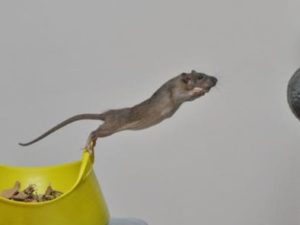 Ideally, when setting up a cage environment, it’s good to think through the
Ideally, when setting up a cage environment, it’s good to think through the  It’s also important to consider that a rat is not necessarily going to want the same thing repeatedly over time. For instance, an overheated rat will often lay happily on a cool surface with no substrate or cover. This is a behaviour that is rarely seen as the norm. Most rats like to be in or under something to rest and sleep – but not always.
It’s also important to consider that a rat is not necessarily going to want the same thing repeatedly over time. For instance, an overheated rat will often lay happily on a cool surface with no substrate or cover. This is a behaviour that is rarely seen as the norm. Most rats like to be in or under something to rest and sleep – but not always.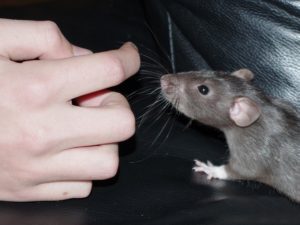 I, myself, am in the habit of asking my rats whether – or not – I can pick them up from the floor of the room where they live. I do this by first offering my hand to sniff and then stroking them once on the head and shoulders. If neither of those actions elicit any kind of withdrawal behaviour I place my hand around them and, even then, I only lift them if I can do so without any physical resistance on their part.
I, myself, am in the habit of asking my rats whether – or not – I can pick them up from the floor of the room where they live. I do this by first offering my hand to sniff and then stroking them once on the head and shoulders. If neither of those actions elicit any kind of withdrawal behaviour I place my hand around them and, even then, I only lift them if I can do so without any physical resistance on their part. Even if you try to work with an opt-out (say – stay in the opt-out hammock) or opt-in system (say – jump into the carrier to be carried to the free-range area), you’ll still find that many rats are up for just about anything most of the time. But not all… and not all of the time. It’s down to us to work out when a rat is saying no!
Even if you try to work with an opt-out (say – stay in the opt-out hammock) or opt-in system (say – jump into the carrier to be carried to the free-range area), you’ll still find that many rats are up for just about anything most of the time. But not all… and not all of the time. It’s down to us to work out when a rat is saying no!





